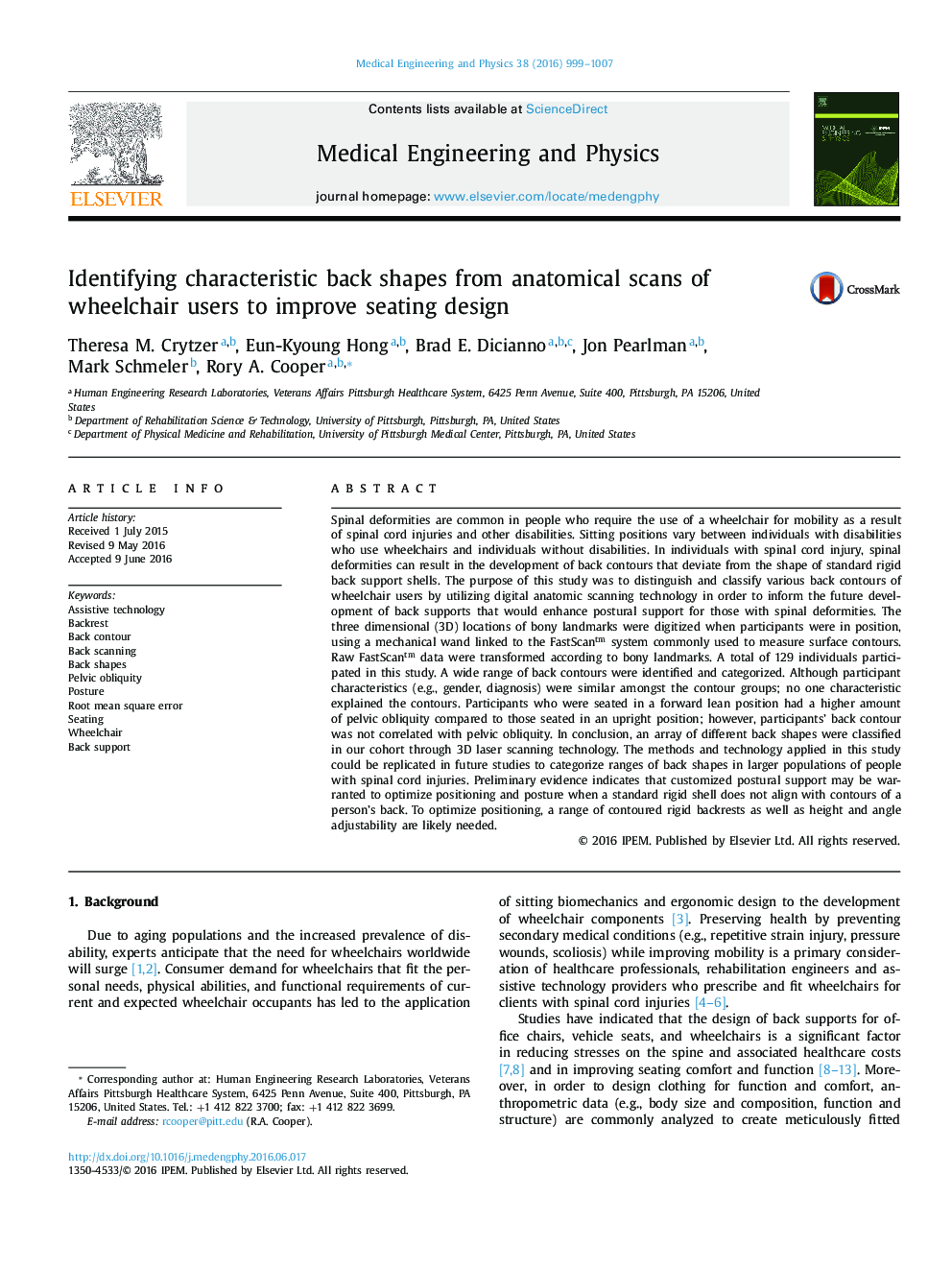| کد مقاله | کد نشریه | سال انتشار | مقاله انگلیسی | نسخه تمام متن |
|---|---|---|---|---|
| 875604 | 1369995 | 2016 | 9 صفحه PDF | دانلود رایگان |
• An array of back contours were distinguished using 3D laser scanning and classified using mathematical modeling.
Spinal deformities are common in people who require the use of a wheelchair for mobility as a result of spinal cord injuries and other disabilities. Sitting positions vary between individuals with disabilities who use wheelchairs and individuals without disabilities. In individuals with spinal cord injury, spinal deformities can result in the development of back contours that deviate from the shape of standard rigid back support shells. The purpose of this study was to distinguish and classify various back contours of wheelchair users by utilizing digital anatomic scanning technology in order to inform the future development of back supports that would enhance postural support for those with spinal deformities. The three dimensional (3D) locations of bony landmarks were digitized when participants were in position, using a mechanical wand linked to the FastScantm system commonly used to measure surface contours. Raw FastScantm data were transformed according to bony landmarks. A total of 129 individuals participated in this study. A wide range of back contours were identified and categorized. Although participant characteristics (e.g., gender, diagnosis) were similar amongst the contour groups; no one characteristic explained the contours. Participants who were seated in a forward lean position had a higher amount of pelvic obliquity compared to those seated in an upright position; however, participants’ back contour was not correlated with pelvic obliquity. In conclusion, an array of different back shapes were classified in our cohort through 3D laser scanning technology. The methods and technology applied in this study could be replicated in future studies to categorize ranges of back shapes in larger populations of people with spinal cord injuries. Preliminary evidence indicates that customized postural support may be warranted to optimize positioning and posture when a standard rigid shell does not align with contours of a person's back. To optimize positioning, a range of contoured rigid backrests as well as height and angle adjustability are likely needed.
Journal: Medical Engineering & Physics - Volume 38, Issue 9, September 2016, Pages 999–1007
